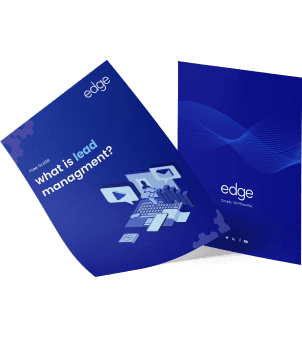Striking a sales deal is not an easy task. It involves a lot of effort, resources, logistics, strategizing, proposing new business ideas, and finally getting these ideas approved. And all of this lies under the umbrella of a Sales Pipeline. The pipeline is a channel through which the sales goals or revenues of a company are achieved. Before you move forward, ask yourself these questions:
- How much time do you actually allot per month to strategize your sales pipeline?
- When was the last time you updated your sales pipeline as per the latest requirements?
- Do you take into account the trending scenarios in the sales culture to revitalize your sales pipeline?
And if you have unclear answers to these questions, no worries; because I will be providing you 5 state-of-the-art ways to design your pipeline. Let's check out some basics first.
Is it worth it to spend your time building a sales pipeline? Why not rather track leads?
As per a Harvard Business Study, on average, companies with a formal sales process had an average growth rate of 15% more than those with ineffective sales pipeline management. Even more interestingly, companies that mastered three specific pipeline practices saw 28% higher revenue growth. Every company may have a different Sales Pipeline depending on its sales targets.
What Is A Sales Pipeline?
A sales pipeline can be defined as a visual representation of the sales prospects and where they are in the buying process. Sales pipelines also tend to provide an overview of a sales representative's account forecast and how close the sales representative is to fulfilling the target, as well as how close the entire sales team is to reaching the target. This allows sales managers and sales representatives to forecast the number and amount of deals that will be locked in a certain time duration.
When it comes to the sales pipeline, it is basically represented visually as a vertical or horizontal bar that encompasses different phases of a sales cycle. However, the stages of the sales pipeline might vary relying on the industry being specified, they generally include assembling sales leads, qualifying leads in order to identify ideal customers, building strong
Also Read, What Is Sales Management
relationships with potential consumers, and closing more deals. The superlative goal is to convert your leads into paying customers.
A sales pipeline can be developed by utilizing Google spreadsheets or an Excel sheet, Customer Relationship Management (CRM) software, and sales pipeline management software. Developing a visual representation of a sales pipeline is extremely viable for managing as well as optimizing the processes of your sales team. CRM tools and functionality can help you to automate specific sales tasks.
However varied your Sales Pipeline may be, usually, the Sales Profile of every company consists of below stages:
1) Prospecting
“Keep Your Sales Pipeline Full By Prospecting Continuously. Always Have More People To See Than You Have Time To See Them.” – Brian Tracy
Very aptly said indeed!
Prospecting means you propose new ideas and plans to your leads with the hope of identifying new business opportunities. Being resourceful in your approach can help you find multiple ways to generate leads and move ahead in the stages.
2) Qualifying
Not every lead is a good fit for your product or services. If your product is ill-suited for a particular lead, why pursue him at all? Please be prudent and be very specific about your target group. And after identifying a prospect or plan, you need to determine the budget and logistic requirements of the same. Act smartly!
Also Read, Sales Trends In 2023
3) Initial Level Meeting
There is no substitute for a meeting, be it an actual face-to-face or a virtual one. In this pipeline stage, a discussion of the prospects with the stakeholders is done to finalize the plan. This consists of a detailed business presentation, product introduction, and convincing the client how exactly your product or service is going to help him in revenue generation. Salespeople, this is where your skills are literally put to test! Remember, the sale most often goes to the most interested party!
4) Proposal
Analyzing and designing the right offer for your client is crucial in the successful conversion of your deal. In this proposal stage, an elaborate proposal with offers is sent to the stakeholders. This is the stage when you are on the brink of closing a sale and hence you need to be very wise. Generate a proposal that is very understandable and sells your value and narrates a clear solution to the customer's needs. Use your CRM to quickly draft a quote/proposal for you.
5) Closing
After negotiations, when the deal is finalized and the contract is signed, salespeople are on cloud nine!
Here is a more clear picture of the sales pipeline stages
Now, building a Solid Sales Pipeline goes through a number of stages, and experts are assigned to supervise each stage of the process. Sales Pipeline is directly linked to business growth and can peak the revenues by multi-folds. Now let us see the following master tips to build a concrete Sales Pipeline.
Also Read, Top CRM Trends In 2023
How To Build Your Sales Pipeline?
➜ Identify The List Of Prospective Customers & Stages
You need to first combine all your potential consumers into your sales pipeline and park them in varied deal stages, relying on where they are present in their customer journey. If a sales representative has sent a promotional email to a prospect, then the deal is considered to be in an "initial contact stage" in your sales pipeline. And if a prospect has come forward and requested a demo or trial of your product, then the deal is considered to be in the "schedule demo stage". And it goes on like this.
➜ Assign Sales Activities For Every Phase
Most frequently the sales activities are dispersed and might take place all across various phases of the sales pipeline. Some of the companies push for a lot of sales activities to assure a fast-moving pipeline, while some of them strictly stick to a few activities that have worked in their favor in the past. However, sales activities might vary from deal to deal, but assigning the sales activities at the commencement of every deal tends to bring transparency to salespeople. Developing and sending promotional emails will be one major task. The second will be tracking those email metrics. Connecting with the potential lead over a phone call would be considered another sales activity. There are some sales activities for which you are required to assign responsibilities to various teams.
➜ Define The Length Of The Sales Cycle
The sales pipeline is laboriously dependent on your sales cycle and how slowly or quickly your sales representatives close the deals. Your sales cycle's length actually depends on various factors and it might differ according to the complexity of your product, source of leads, customization, etc.
➜ Resolve Ideal Pipeline Size
It is important to know how many deals or targets your salespeople are pursuing in order to achieve sales targets and revenue objectives for the year. Just focusing on the target is not sufficient, as a lot of deals might rot over time and might not turn into a sale. For example — for every 50 deals, your sales reps pursue in a month, 10 or 15 out of them might become stagnant. So, you should keep an eye out for 100 deals instead of 50 to realize your sales objectives. Basically, for a lot of opportunities to make it to the final stage, you need a huge amount of deals to start with.
Further Reading, 11 Excellent Alternatives to "Dear Sir" or "Dear Madam
➜ Determine Sales Pipeline Metrics
Sales pipelines are amazing visual aids specially for sales managers in order to track as well as monitor their sales team. The sales pipelines continuously change with sales activities. However, monitoring sales metrics can be useful in tracking the soundness of your sales pipeline on a regular basis. Now, if you specify your sales targets for the month, quarter, or year, then tracking sales pipeline metrics on a regular basis will help you to find out how many deals your sales team requires to obtain, to meet the target and earn revenues for the particular year.
Some Innovative Ways To Build A Sales Pipeline
A) Use Social Media Platforms
“If you make customers unhappy in the physical world, they might each tell 6 friends. If you make customers unhappy on the Internet, they can each tell 6,000 friends.” – Jeff Bezos
Now that is the power of the internet or more so, social media! Imagine the wonders it can do to your business if you utilize its power for engaging with your clients and enlightening yourself about market trends. Social media is a great way to promote your business or any new business ideas these days. It will enable you to connect to the right kind of audience for business deals.
Using social media networks you can also gain knowledge about the customer’s requirements and market demand. It acts as a great pipeline between customers and businesses. Connect with relevant groups, and share updates not only about your products but also your industry-specific content and trending news. This is the best way to remain in constant touch with your business community.
2) Nurture Existing Customers
Old Customers can act as an asset to the company. When you close a deal, you are actually opening a relationship. It is all about how the customers feel when they do business with you. If you give the best customer experience to the existing customers, they can introduce you to the new ones and promote your brand to a large audience. The referral system never gets old, and statistics show that a referred prospect is more likely to initiate business with you than a cold prospect.
3) Attending Events/Seminars
Business events held on a large scale attract a lot of audiences. Attending these events can help you propose your business to a completely new set of leads which if handled properly will turn into your customers. These Seminars prove to give a lot of exposure to both, the customers as well as the business. You have a chance to establish your company as a brand and showcase your uniqueness. Be keen and make the most of the sales events and seminars.
4) Online Demonstrations
Holding online webinars to explain your product or services to potential customers is a very smart idea these days. More so, this has become extremely relevant now that most of us are working from home. The majority of people prefer this because they can attend the event from the comfort of their homes. I say online demos are the need of the hour and an eternal part of the future. So, business management should start training their salespeople to make them skilled and efficient to successfully handle such online demonstrations.
5) Website Chat Boxes
When I visit any website and I have a quick query, I immediately choose the live chat boxes to clear out my doubt. What about you? Why draft a formal mail or call them, if you are being answered within seconds? A website chat box adds a human touch to your website. It is a way of welcoming customers to buy into your brand and showing your concern towards the customer and their requirements. Incorporate such chat boxes on your website to give your customers a real-time experience.
Incorporate such chat boxes on your website to give your customers a real-time experience. And with AI chat technology, you can take this experience to the next level—not only offering instant assistance but also freeing up human resources to focus on more complex tasks, thereby improving overall efficiency.
Further Reading, 11 Creative LinkedIn Summary Examples and How to Write Your Own
Final Thoughts
I have clubbed these top 5 ways you can use to build a strong sales pipeline. Apart from these, there are a number of other ways to increase revenues but due to the advancement of technology, social media platform practices are increasingly used for promotional and marketing purposes now. The better the marketing, the higher the Sales graph goes. Let's conclude that social media and the internet play a great role in building and implementing a solid sales pipeline.
What did you think about these 5 techniques? I would love to hear from you! Your insights are valuable, always! Share this article if you found it useful. Let's grow together!













